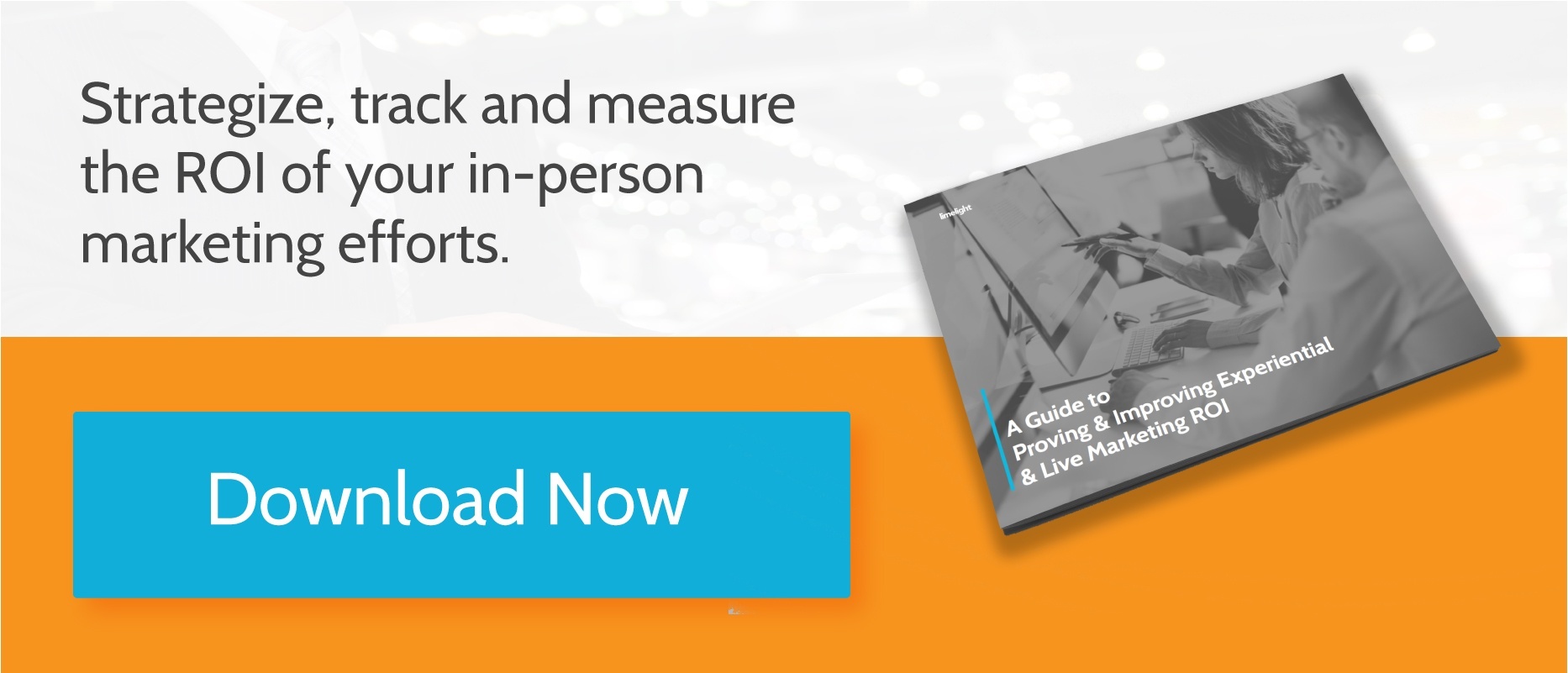Just One in Five Marketers Can Tie Revenue to Live Events. How Come?
So you want to measure the ROI of your experiential campaigns? It might be harder than you think.
Brand new research suggests that fewer than 20 percent of the one in four brands that spent 25-50 percent of their marketing budget on hosting live events make a direct tie to revenue. In other words, these brands struggle with measuring gains or losses from experiential marketing.
But why? Perhaps it's a problem with technology. Some software falls short when it comes to performance-based metrics and analytics. Or perhaps some brands just don't have the resources to plan, manage and measure their campaigns effectively. Here's how you can avoid mistakes when estimating ROI for your own experiential marketing projects.
The Problems with Measuring the ROI of Experiential Campaigns
Around 60 percent of marketers are confident when it comes to boosting brand awareness, but are not so sure in their ability to optimize pipeline creation, qualified leads and the number of event attendees, according to enterprise event automation platform Certain and Heinz Marketing's 2018 State of B2B Event Marketing Report.
Despite this, respondents in the study recognized that brand awareness and pipeline maximization are the two most important marketing objectives.
"In order to make the handoff from marketing to sales more successful, it's critical for marketers to understand how their event strategies are working, where they can create opportunities for stronger engagement, and how they can tie that engagement to measurable business results," says Peter Micciche, CEO of Certain.
Although the research concerned B2B event marketers, you can assume the results are the same for B2C. Inadequate tech, poor project planning, a lack of communication -- these are just some of the reasons why brands can't measure the ROI of customer-driven experiential campaigns.
Many marketers say their sales strategies need work, too. Around half of all respondents in the survey said their marketing and sales weren't effective.
Is Tech Helping or Hindering?
The study also showed how marketers strive to find the best technologies and resources to plan and manage their campaigns -- but often fail. The majority of respondents said that they used CRM platforms for event planning and managing (around 70 percent), followed by marketing automation tools (over 60 percent), event mobile apps (over 30 percent) and event automation platforms (around 25 percent).
But just 25 percent of marketers said their use of technologies and resources were effective. They claimed their strategies resulted in lost customer data and revenue.
Choosing the Right Technology
Could this all be a result of bad technology? Experiential marketing depends on the latest software that delivers valuable campaign intelligence. Without it, you can't track leads, capture data and follow-up on customers after an event has finished.
Custom dashboards, real-time analytics, logistics management -- the best experiential marketing software provides you with a 360-degree overview of your event attendees in one place, reducing the need for multiple programs.
In the next several years, 1 in 3 CMOs expect to allocate 21-50% of their budget to brand experience including experiential, event and other live marketing initiatives.
But how many of these programs actually deliver real results?
It's not just about the right software. The heart of the problem is data. Without the right data from various live activations--sponsorships to samplings, auto shows to test drives--how can marketers benchmark their performance activation after activation? How can they choose the right key performance indicators for their campaigns?
Research shows that a sizeable chunk of marketers struggle to measure the ROI of experiential and get real value from their campaigns. Don't be one of them. Use the right technology and plan the strategy of your live events properly in order to improve live and experiential ROI.

